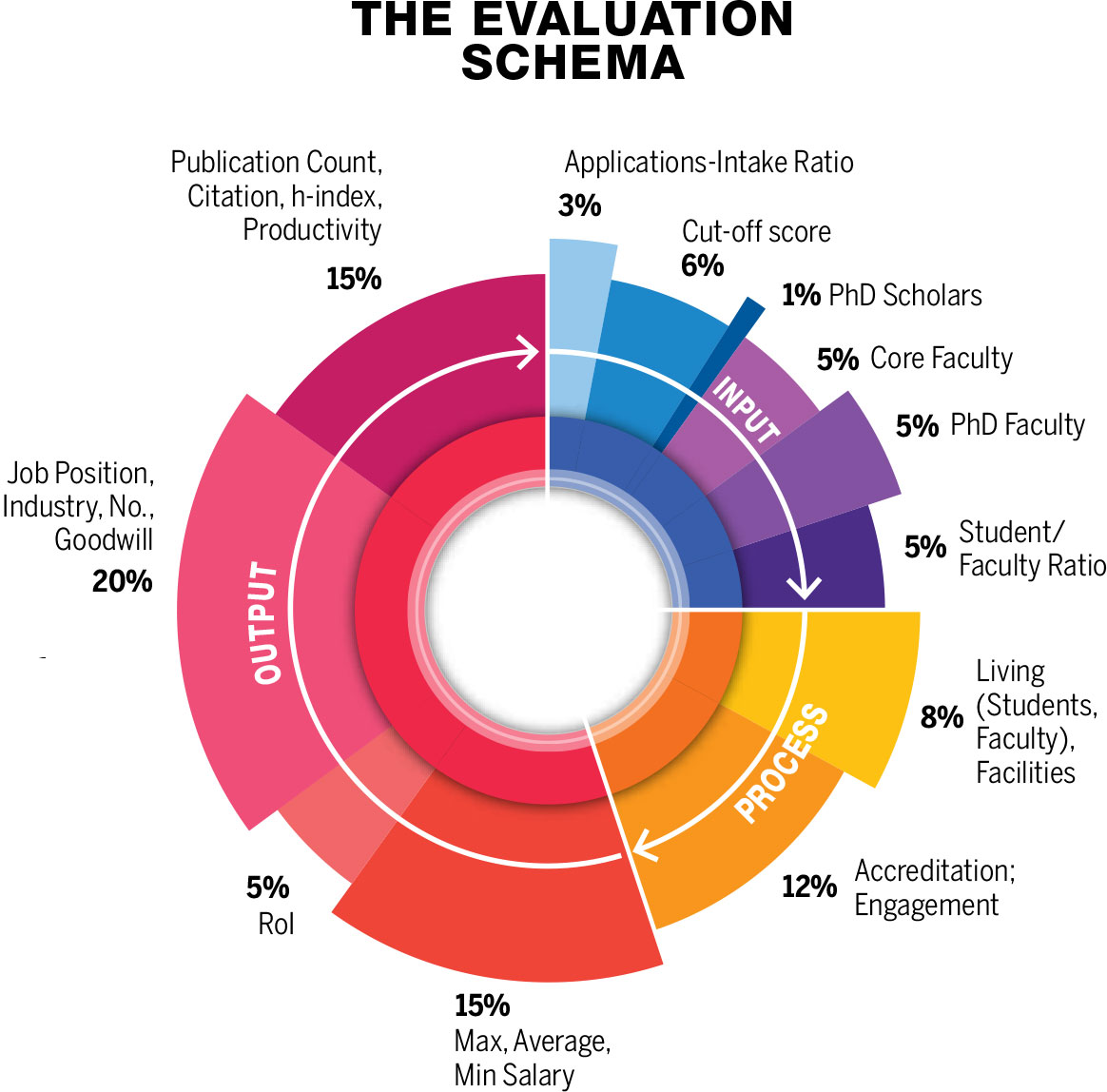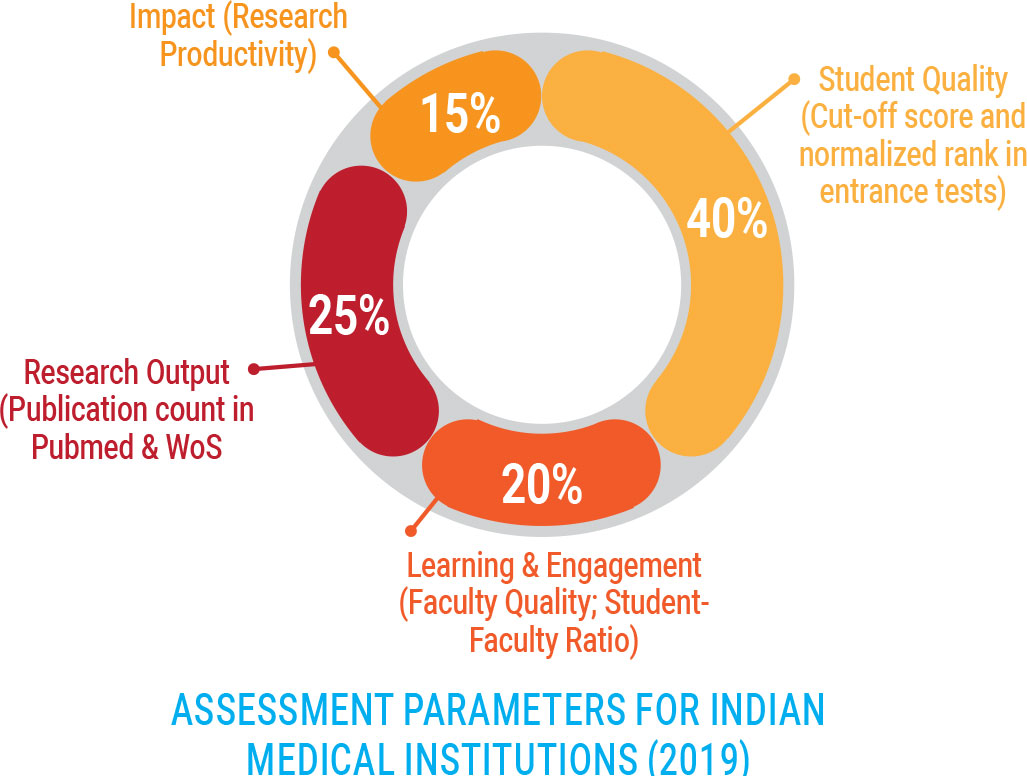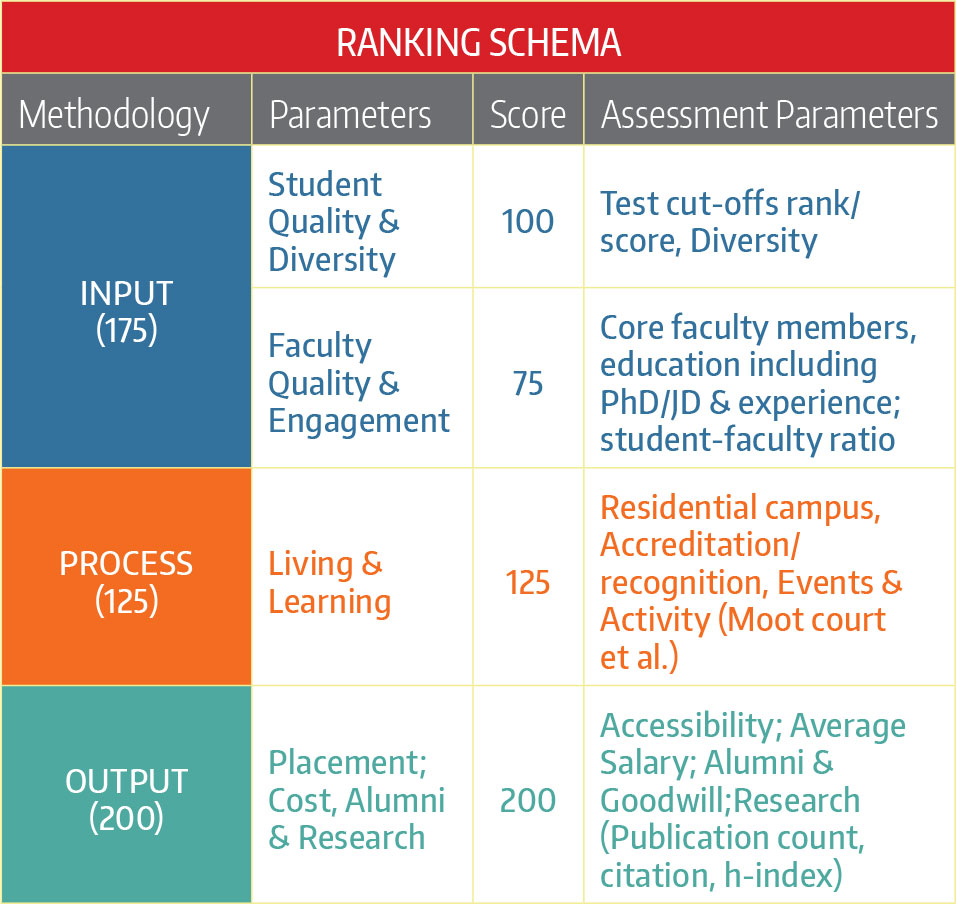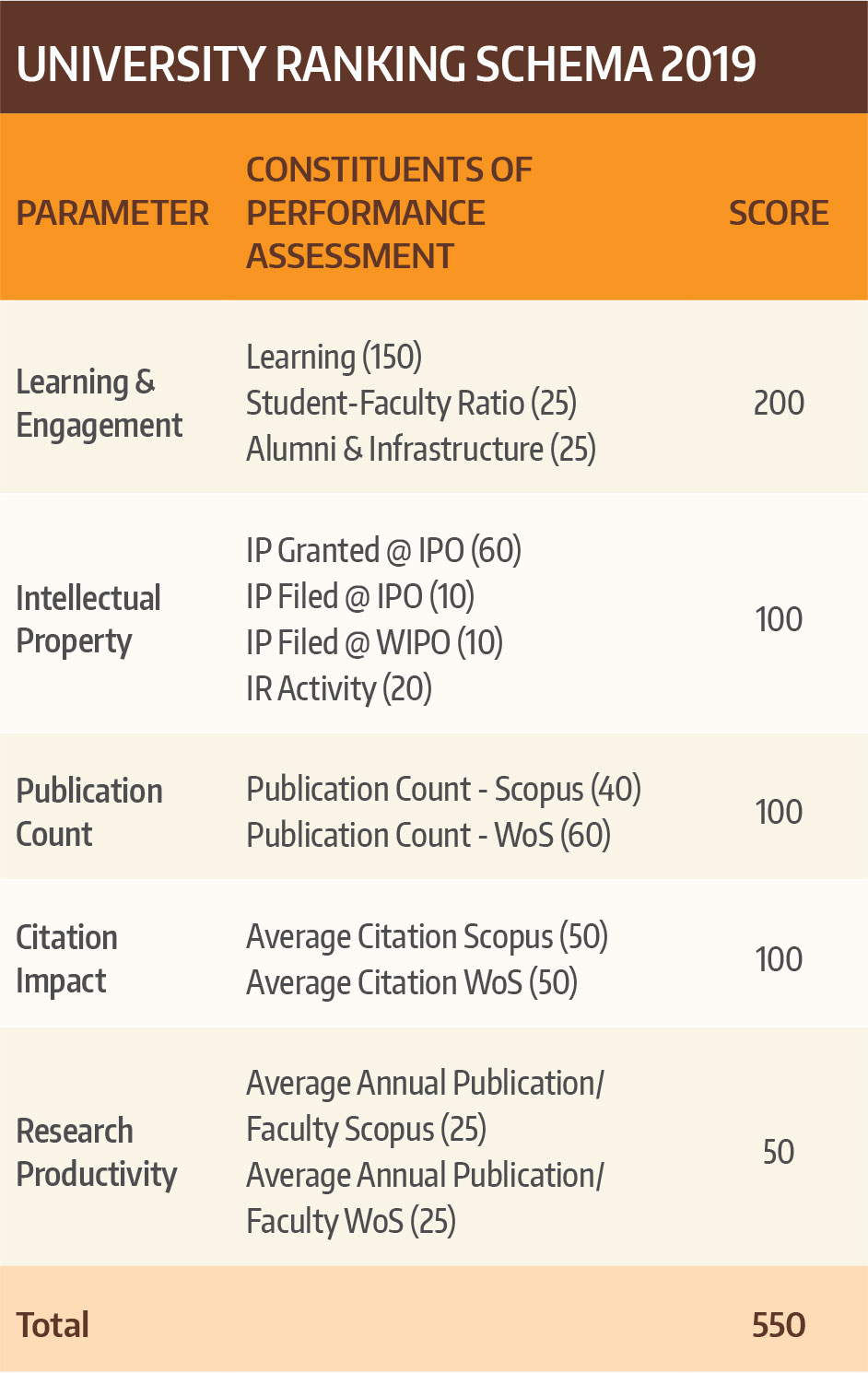Careers360 Ranking Methodology
Ranking And Rating
Objective Of Ranking
The main objective of careers360 ranking is to help students decide the top ranked colleges where they can seek admission. The parameters used to rank/rate colleges are relevant to aspirants and are pre-requisite for colleges for providing intellectual ecosystem.
Universe and grouping method (grouping / ratings)
Careers360 shortlists over 5000 colleges across domains each year. Out of these colleges only those colleges are rated/ranked which provide transparent data requested by careers360.The cumulative scores of colleges are then calculated and they are divided into clusters as per their scores.
Ranking Methodology
Methodology
Ranking Methodology: The colleges are ranked as per the cumulative score that they have received. The college that has got the maximum cumulative score will be ranked first while the college that has got least cumulative score will be ranked last.
Rating Methodology: Based on the individual scores secured by colleges in respective parameters the cumulative score of all the colleges ranked is calculated.
A cumulative rating is generated for all colleges that occupy the same output pool. We used the natural gaps that exist in any normal distribution to identify and delineate clusters. The robustness of data has enabled us to discriminate amongst colleges and hence we were able to create nearly 9 clusters. These nine clusters basically have been formed through normal distribution of the marks obtained by colleges. The colleges were awarded ratings as per their respective slabs as per their percentile.
| Rating | Score Rating | Description |
|---|---|---|
| AAAAA | 95-99 percentile | Exceptional |
| AAAA+ | 90-94 percentile | Outstanding |
| AAAA | 80-89 percentile | Very Good |
| AAA+ | 70-79 percentile | Good |
| AAA | 60-69 percentile | Above Average |
| AA+ | 50-59 percentile | Fair |
| AA | 40-49 percentile | Average |
| A+ | 35-39 percentile | Satisfactory |
| A | < 35 percentile | Pass |
Why we ranked private and public colleges separately?
We have ranked private and public colleges separately as team careers360 found out that support system of both types of Institutions are completely different .While, Government colleges have lot of government support in terms of infrastructure and capital, private colleges have to generate their own investment and fight out for prominent faculty often paying them hefty salaries.
Ranking Terminologies
Overall Score
The cumulative score that the college have got after adding scores of individual ranking parameters.
Rank
The position that a particular college has got in its ownership category.
State Rating
Clusters have been formed through normal distribution of the marks obtained by colleges after normalizing regional factors and number of test takers. The colleges were awarded ratings as per their respective slabs as per their percentile among colleges of their respective states.
Best Branch
The best branch has been calculated as per the best closing rank/score of the particular college in current / previous year.
Ownership Types
The colleges have been divided as per their ownership types of Public ,Private and Public-Private partnership
Intake Exams
The exams through which a student can take admission in various courses of the college
Apply Button
The concerned college will be informed that you are interested in the college and they may contact you for more updates.













